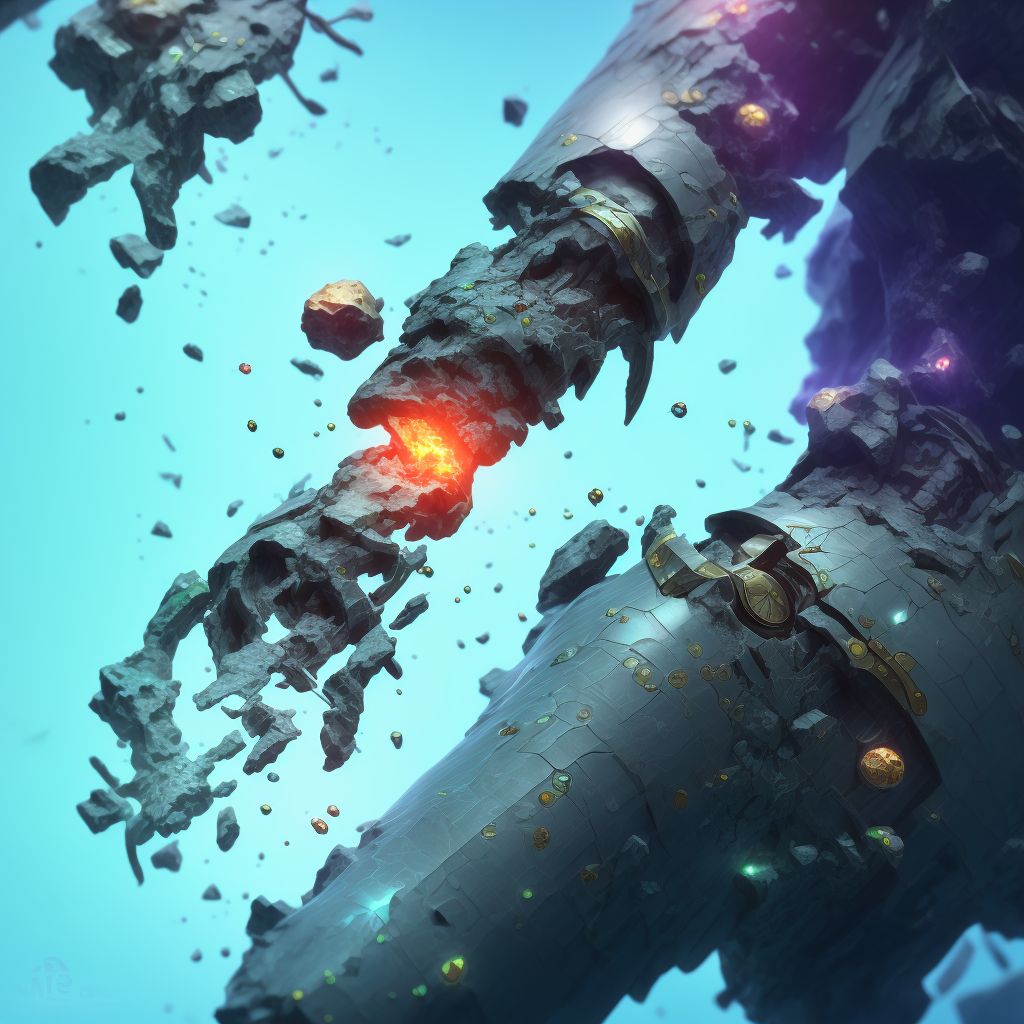
Displaced oblique fracture of shaft of left fibula, subsequent encounter for closed fracture with delayed healing Save
ICD-10 code: S82.432G
Disease category: S82.432: Displaced oblique fracture of shaft of left fibula
Displaced Oblique Fracture of Shaft of Left Fibula: Understanding Delayed Healing
A displaced oblique fracture of the shaft of the left fibula can be a painful and debilitating injury. This type of fracture occurs when the fibula bone breaks at an angle, causing the bone fragments to shift out of alignment. While fractures of the fibula are relatively common, delayed healing can prolong the recovery process and require additional medical attention.
When a displaced oblique fracture of the shaft of the left fibula occurs, it is crucial to seek prompt medical attention. The initial encounter for a closed fracture involves diagnosing the injury through physical examination and imaging tests. This helps determine the severity of the fracture and the appropriate course of action for treatment.
Delayed healing is a common complication that can arise from a displaced oblique fracture of the shaft of the left fibula. This occurs when the fractured bone takes longer than usual to heal or fails to heal completely. Several factors can contribute to delayed healing, including the extent of the fracture, poor blood supply to the area, the presence of infection, and inadequate immobilization.
During subsequent encounters for a closed fracture with delayed healing, healthcare professionals may monitor the progress of the healing process and provide necessary interventions. This can involve reassessing the fracture through imaging tests, evaluating the patient's symptoms, and recommending additional treatments to promote healing.
- Immobilization: One of the primary approaches for treating a displaced oblique fracture of the shaft of the left fibula is immobilization. This typically involves the use of a cast or a brace to stabilize the bone fragments, allowing them to heal properly.
- Physical therapy: Once the fracture starts to heal, physical therapy may be recommended to regain strength, flexibility, and range of motion in the affected leg.
- Weight-bearing restrictions: Depending on the severity of the fracture and the progress of healing, weight-bearing restrictions may be necessary. This can help prevent further damage to the healing bone and promote optimal recovery.
In conclusion, a displaced oblique fracture of the shaft of the left fibula is a challenging injury that can lead to delayed healing. Seeking timely medical attention and following the recommended treatment plan are crucial for a successful recovery. If you or someone you know has experienced this type of fracture, consult with a healthcare professional for appropriate evaluation and management.
Treatment of Displaced oblique fracture of shaft of left fibula, subsequent encounter for closed fracture with delayed healing:
Treatment Options for Displaced Oblique Fracture of Shaft of Left Fibula with Delayed Healing
When it comes to a displaced oblique fracture of the shaft of the left fibula with delayed healing, it's crucial to understand the available treatment options. These fractures occur when the bone breaks at an angle, resulting in the fragments being displaced from their original position. T...
To see full information about treatment please Sign up or Log in